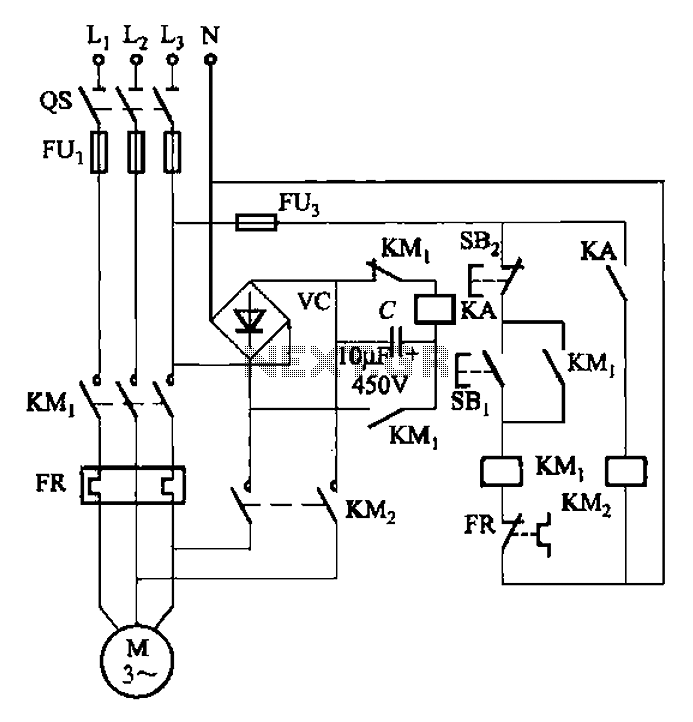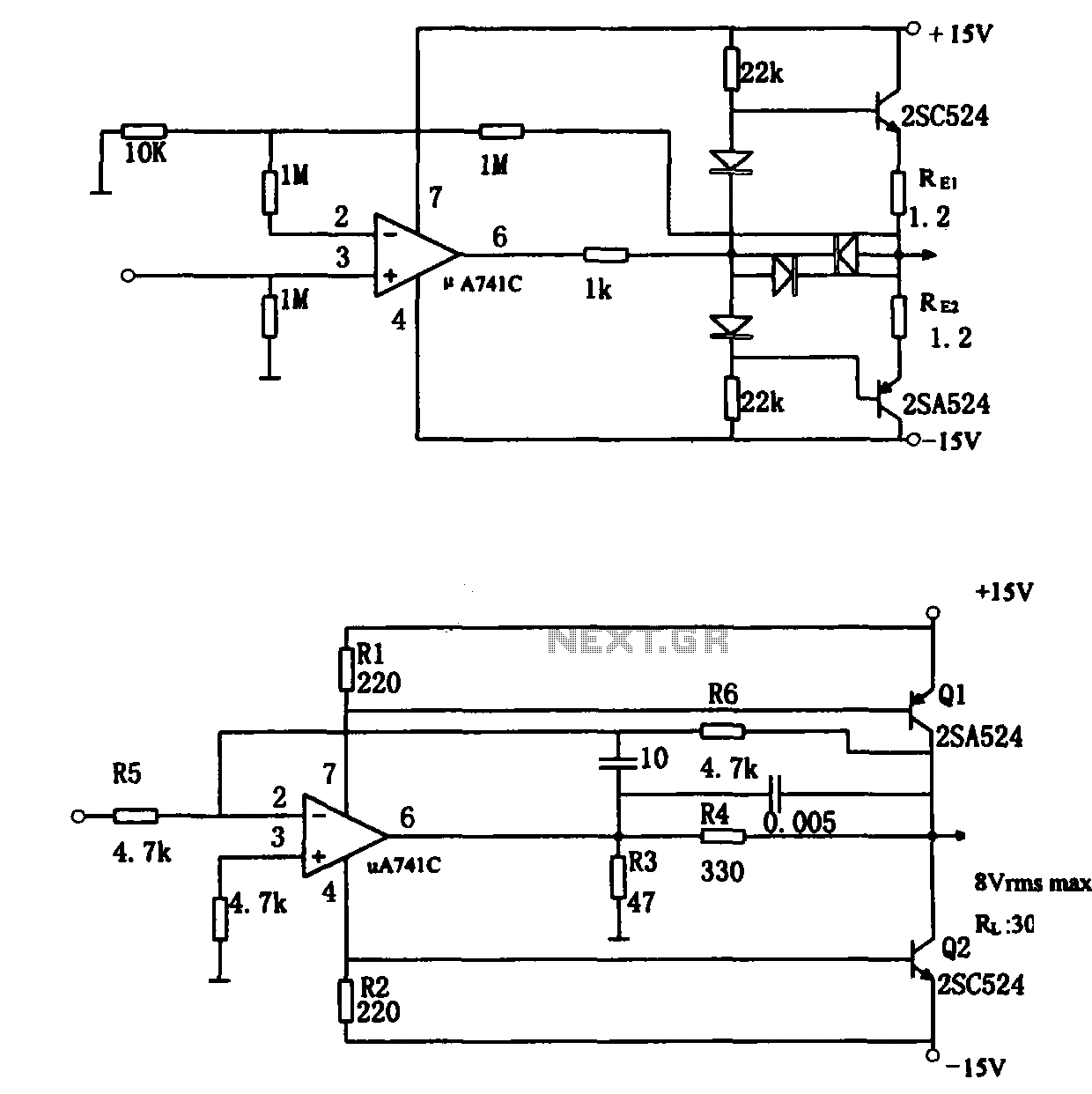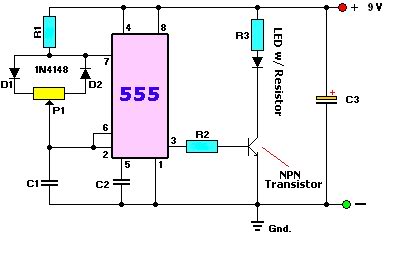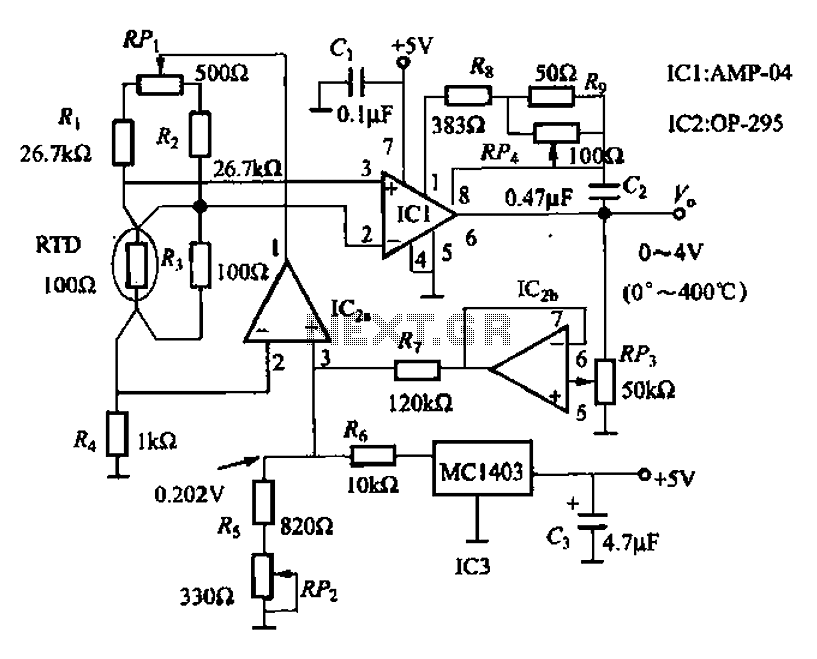
Preamp Transmit-Receive Sequencer Circuit
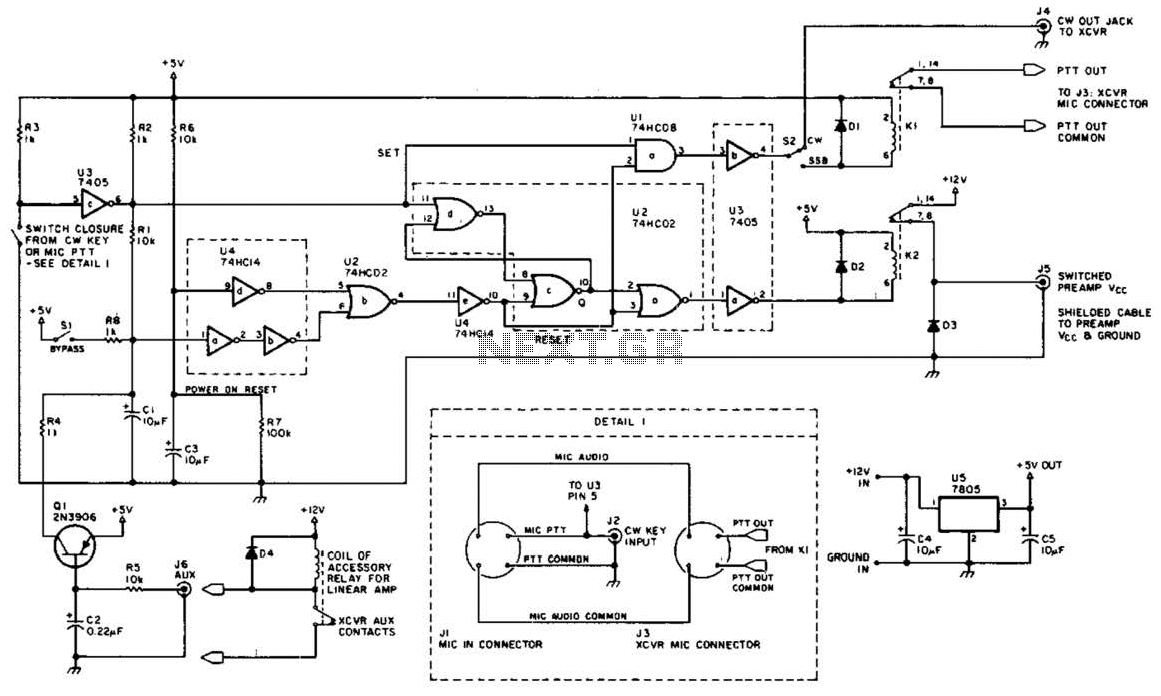
This circuit is beneficial for amateur radio operations in VHF and UHF frequencies, where a mast-mounted antenna preamplifier is employed for reception. The kit manages the transmit-receive (T-R) switching and relay sequencing to prevent high RF levels from being inadvertently applied to the preamplifier during switching intervals.
The circuit utilizes a relay-based system to facilitate the switching between transmission and reception modes, ensuring that the preamplifier is protected from potentially damaging RF signals during the transition. The design typically includes a control circuit that triggers the relay based on the operational state of the radio equipment.
In the reception mode, the mast-mounted antenna preamplifier amplifies weak signals received from the antenna, enhancing the overall performance of the radio system. The preamplifier is strategically placed close to the antenna to minimize signal loss due to cable length.
During the transmission phase, the circuit engages a relay that disconnects the preamplifier from the antenna, effectively isolating it from the high power levels generated by the transmitter. This isolation is crucial to prevent damage to the preamplifier and ensure optimal functionality of the radio system.
Additional features may include LED indicators to signal the current operational mode, as well as additional filtering components to reduce noise and improve signal clarity. The overall design emphasizes reliability and efficiency, making it suitable for amateur radio enthusiasts who require robust performance in their VHF and UHF communications. Proper attention to component ratings and circuit layout is essential to maintain signal integrity and protect sensitive components from high RF levels. This circuit is useful in amateur radio VHF and UHF work where a mast-mounted antenna preamp is used for receiving. The kit controls T-R switching and change-over relay sequencing so that high RF levels are prevented
from accidentally being applied to the preamplifier during switching intervals.
The circuit utilizes a relay-based system to facilitate the switching between transmission and reception modes, ensuring that the preamplifier is protected from potentially damaging RF signals during the transition. The design typically includes a control circuit that triggers the relay based on the operational state of the radio equipment.
In the reception mode, the mast-mounted antenna preamplifier amplifies weak signals received from the antenna, enhancing the overall performance of the radio system. The preamplifier is strategically placed close to the antenna to minimize signal loss due to cable length.
During the transmission phase, the circuit engages a relay that disconnects the preamplifier from the antenna, effectively isolating it from the high power levels generated by the transmitter. This isolation is crucial to prevent damage to the preamplifier and ensure optimal functionality of the radio system.
Additional features may include LED indicators to signal the current operational mode, as well as additional filtering components to reduce noise and improve signal clarity. The overall design emphasizes reliability and efficiency, making it suitable for amateur radio enthusiasts who require robust performance in their VHF and UHF communications. Proper attention to component ratings and circuit layout is essential to maintain signal integrity and protect sensitive components from high RF levels. This circuit is useful in amateur radio VHF and UHF work where a mast-mounted antenna preamp is used for receiving. The kit controls T-R switching and change-over relay sequencing so that high RF levels are prevented
from accidentally being applied to the preamplifier during switching intervals.
